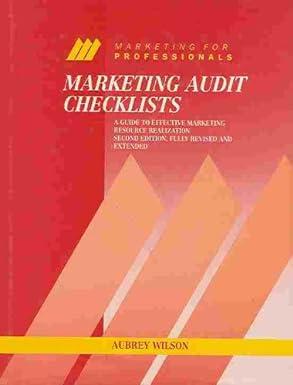Question
JCX Case JCX Ltd operates in a highly competitive market and is involved in the production of parts for the farming industry. It has plants
JCX Case JCX Ltd operates in a highly competitive market and is involved in the production of parts for the farming industry. It has plants in Auckland, Wellington, Christchurch and Dunedin. One of its plants, the Wellington Plant, specialises in the production of two parts: JCX-1 and JCX-2. Part JCX-1 produced the highest volume of activity, and for many years, it was the only part produced by the plant. Five years ago, Part JCX-2 was added. Profits increased for the first few years after the addition of the new product. However, in the last two years the plant has faced intense competition and its sales of Part JCX-2 has dropped. In fact, the plant showed a small gross loss in the most recent reporting period. Much of the competition was from foreign sources, and the plant manager was convinced that the foreign producers were guilty of selling parts below their cost of production. The plant currently uses a traditional costing system where only manufacturing overhead costs are allocated to products using a predetermined plant-wide overhead rate based on direct labour hours. The companys CEO Jim James has recently attended a leadership conference in London and was very impressed by a presentation given by Nicola Toms, CFO of a large manufacturing company, on ABC. Jim managed to arrange a private meeting with Nicola to explore her experiences with the development and implementation of ABC in her organisation. After the meeting, Jim was convinced that JCX could benefit from the implementation of ABC. He agreed with Nicolas view that as the level of external environment factors increases, more reliable product cost information is needed. He was very impressed with how Nicola went about her implementation strategy. In particular, he noted Nicolas emphasis on the importance of clearly addressing up-front major issues that are likely to arise when seeking buy-in of the managers in the organisation. Jim took notes of those issues as follows. a) ABC is too complex and expensive to implement. b) ABC can be prone to misuse by constant revision of the cost pools or cost drivers. c) In ABC, not all overhead costs, such as CEO salary, can be allocated to specific activities. d) If ABC is implemented, other systems, such as variance analysis, may have to be changed resulting in disruptions and costs. e) While many organisations have experimented with ABC as a one-off exercise, not many adopted ABC as an ongoing costing system. On your instructions, your team has done this preliminary work based on the information for the year ending 31 December 2017. 1. The predetermined manufacturing overhead rate is calculated based on the following budgeted information: Estimated manufacturing overhead cost: $5,500,000 Estimated total direct labour hours: 250,000 hours. 2. Total direct material cost for Product JCX-1 is $3,120,000 and $1,580,000 for Product JCX-2. 3. 20,000 units of Product JCX-1 were produced and sold. Each unit requires 5 direct labour hours at a cost of $24.00 per hour. 4. 10,000 units of Product JCX-2 were produced and sold. Each unit requires 15 direct labour hours at a cost of $24.00 per hour. 5. Non-manufacturing overhead costs are not allocated to products and ignored for this exercise. 6. Product JCX-1 is sold for $500 per unit and Product JCX-2 is sold for $840 per unit. Activity-based costing information A number of cost pools have been identified. The following tables show details of manufacturing costs, and how management intends to allocate that to the identified cost pools.
Table 1 Manufacturing overheads:
Indirect materials $676,000
Indirect labour 2,200,000
Factory equipment depreciation 550,000
Other factory related costs 2,074,000 Total 5,500,000
Table 2 Suggested allocation of overhead costs to cost pools
Customer orders Automated machinery Finishing Product Design
Indirect materials 50% 50%
ndirect labour 10% 5% 60% 25%
Factory equipment depreciation 95% 5%
Other factory - related costs 5% 45% 30% 20%
Additional information
Product JCX-1 does not require any new design resources. 20,000 units were manufactured from 550 individual orders. Each unit requires 4.5 machine hours.
Product JCX -2 contains some custom-made features are therefore requires design resources. 10,000 units were manufactured from 950 individual orders. Each unit requires 15 machine hours.
Direct material cost and direct labour cost are traced directly to products. ]
The following table shows the cost drivers for each activity cost pool.
Table 3 Cost drivers:
Activity cost pool Activity Customer orders 1,500
Orders Automated machinery 240,000
Machine hours Finishing 250,000
Labour hours Product design 500 Designs
Present a statement that compares product profitability under traditional volume (direct labour) based costing system & activity based costing (ABC) system. detailed workings (20 marks)
Step by Step Solution
There are 3 Steps involved in it
Step: 1

Get Instant Access to Expert-Tailored Solutions
See step-by-step solutions with expert insights and AI powered tools for academic success
Step: 2

Step: 3

Ace Your Homework with AI
Get the answers you need in no time with our AI-driven, step-by-step assistance
Get Started


